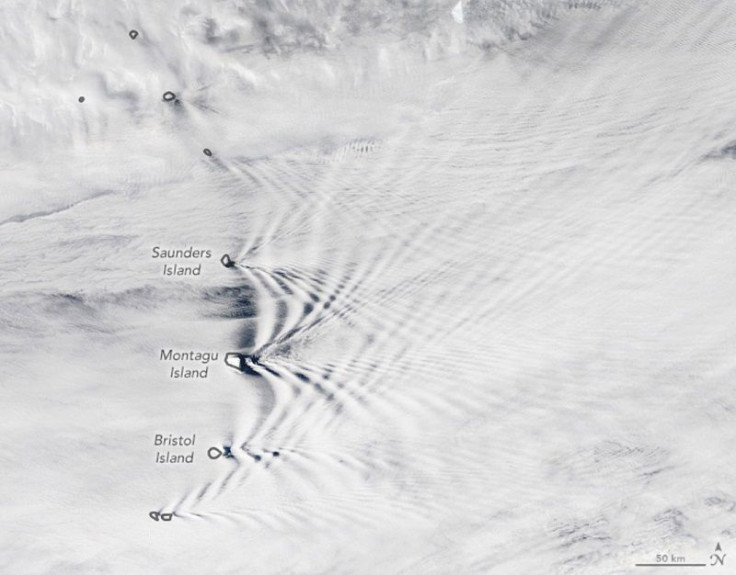NASA Satellite Image Shows 'Wave Clouds' Over South Sandwich Islands
KEY POINTS
- A NASA satellite captured wave clouds over South Sandwich Islands
- Wave clouds occur when stable air passes through raised features like mountains
- In some cases, mountain waves can be distruptive to aviation
A NASA satellite captured a series of mountain-wave clouds over the South Sandwich Islands. In the natural-color image, the wave clouds can be seen flowing around the islands’ three tallest islands, Saunders, Montagu, and Bristol, causing a triangular-shaped pattern.
The image was taken by the Moderate Resolution Imaging Spectroradiometer (MODIS) on the Terra satellite last Feb. 5 when the conditions were just right to form clouds. Because of the islands’ height, they disrupted the air masses flowing around them, thereby causing the interlocking series of mountain-wave clouds.
According to NASA research meteorologist Galina Wind, although the patterns can be seen behind the three tallest islands, another layer of clouds on top is partially blocking the view so that it is not that visible behind the others. Wind also describes and explains the wave clouds in terms of its similarity to water movement.
“Imagine being on a motorboat looking back at triangular, banded patterns forming behind you as wake waves ripple through the water,” Wind said. “This is the same effect, except the mountains are stationary and the surrounding air is rushing by at a good clip. The moving air hits the still mountain in the same way the prow of a moving boat hits still water.”
Wave Clouds
Wave clouds are formed when stable air flow passes over raised features such as mountains. In the case of the South Sandwich Islands, Saunders, Montagu, and Bristol all approach at least 3,300 feet (1,000 meters) above sea level.
As the air mass travels through the wave, it repeatedly uplifts and descends. If the conditions are right for cloud formation, as they were when the image of the South Sandwich Islands was taken, the clouds will form at the crest but not as the wave dips. This then forms the characteristic bands behind the mountain.
As interesting as the clouds look, however, the mountain waves can actually be rather disrupting to aviation as they are often associated with strong currents and severe turbulence.
Specifically, the vertical currents can make it difficult for aircraft to maintain altitude, potentially leading to a loss of control. Meanwhile, severe turbulence may cause aircraft to suffer serious structural damage and, in extreme cases, cause parts of the aircraft to break up. Even with moderate turbulence, the passengers and crew of an aircraft may suffer injuries if they happen to be walking around the cabin when the turbulence hits.

© Copyright IBTimes 2024. All rights reserved.












